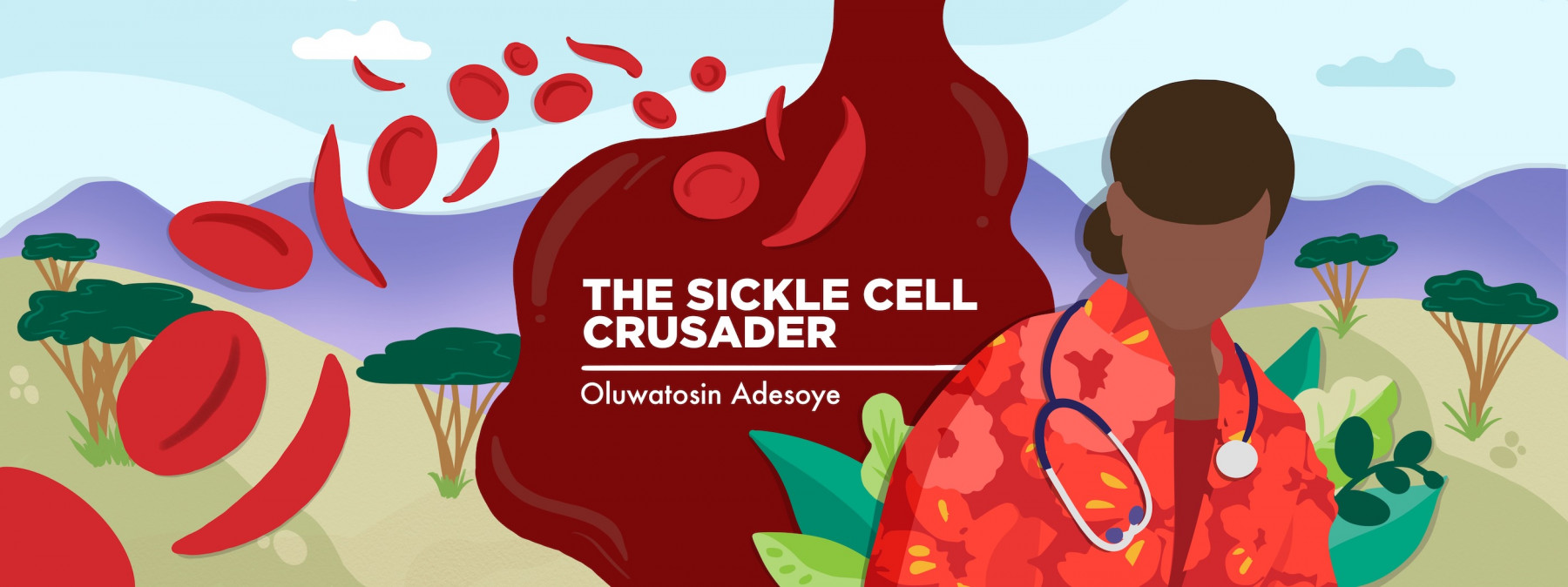Understanding the evolution of my sickle cell pain
Why sickle cell causes pain and how to best manage it
Written by |

From my experience, pain is one of the hallmark symptoms of sickle cell disease. In fact, it is its trademark.
Unsurprisingly, the translation of sickle cell disease in my Yoruba language is “aro’moleegun,” which denotes “bone pain.” If you have moderate to severe sickle cell disease, pain is a constant. But sickle cell pain isn’t limited to the bone; any part of the body that is supplied by blood can experience pain.
The disease is called “sickle cell” because our red blood cells are sickle-shaped instead of biconcave. Sickled red blood cells, unlike normal red cells, are sticky and gel-like. Instead of flowing freely through blood vessels, these blood cells adhere to them and obstruct blood flow to the body’s organs.
Blood also carries oxygen and other nutrients, which this impairment prevents from reaching organs, leading to tissue injury or death. This tissue injury activates the nociceptive pain pathway, causing pain in sickle cell patients. The acute pain caused by the sickling process of sickle cell disease is called a sickle cell crisis.
Growing up
My parents told me that I experienced my first sickle cell crisis when I was 1 year old. At the time, my parents didn’t know I had sickle cell disease. I just suddenly presented with bone pain in my limbs and abdomen, which was evident by my endless crying and my reaction when they touched those areas of my body.
I also had a distended abdomen, a high fever, and deeply yellowish eyes, which led to my first hospital admission and a sickle cell diagnosis.
However, my parents didn’t tell me about the disease until I was 11. Yet despite being a child, I knew something wasn’t quite right. I was often in severe pain. This happened periodically and lasted about five days. Of course, my parents treated me differently than my siblings, and I was the child who always slept in their room so that they could keep their eyes on me.
As I grew older, I discovered that I fall ill more frequently than my siblings. I noticed that a little stress or cold weather triggers pain for me. I couldn’t take certain liberties like my peers could. If I played a lot, I would end up sick and miss classes. All of this got me very curious.
When I was of school age, I became highly inquisitive. I remember asking my mum why I was the only child routinely using medications. I was given confusing answers, but they were just enough to eliminate my curiosity for a while.
As I reached my early teenage years, I learned more about my health and the factors that can precipitate sickle cell crises, which are called triggers. This knowledge often helped reduce my acute pain episodes. The crisis triggers I learned include stress, temperature extremes (both hot and cold), dehydration, physical exertion, infection, smoking, alcohol, sleep deprivation, and high altitudes.
As I grew older, I learned about other triggers like hypoxia, acidosis, menstrual cramps, surgical procedures, pregnancies, obstetric deliveries, coexisting medical conditions, and emotional disturbances like anger, depression, overexcitement, sadness, fear, and panic. I also learned that there are idiosyncratic triggers that are peculiar to some individuals but not generalized.
Over the years, my sickle cell pain has evolved with age. In my younger years, I had more acute pain episodes. As I grew older, the acute pain was reduced, and I had more chronic pain syndrome, complications, and acute-on-chronic pain episodes.
Getting educated
None of these stages has been easy. I’ve only been able to deal with these transitions and excel at overcoming my sickle cell challenges by increasing my knowledge of the disease, learning more about sickle cell crisis triggers and management, and taking my healthcare and preventive care seriously.
Sickle cell disease is a progressive disorder. It usually becomes more challenging with age, at least for people with moderate to severe disease. The good news is there are many ways to help alter the disease’s progression. We can do this by taking care of our health, which can be achieved by learning, avoiding crisis triggers, managing unavoidable ones, taking our routine medications, going to clinic appointments, using disease-modifying and preventive treatments as prescribed by our health professionals, and taking our health seriously.
Some people living with sickle cell disease are defying the odds and living longer by using different forms of disease-modifying therapies and paying attention to their health and care.
Positivity and good mental healthcare are essential for improving sickle cell patients’ health.
Note: Sickle Cell Disease News is strictly a news and information website about the disease. It does not provide medical advice, diagnosis, or treatment. This content is not intended to be a substitute for professional medical advice, diagnosis, or treatment. Always seek the advice of your physician or other qualified health provider with any questions you may have regarding a medical condition. Never disregard professional medical advice or delay in seeking it because of something you have read on this website. The opinions expressed in this column are not those of Sickle Cell Disease News or its parent company, Bionews, and are intended to spark discussion about issues pertaining to sickle cell disease.







Gbakeji Avwerosuoghene
How can Manage with my baby of four years, just discovered last year.